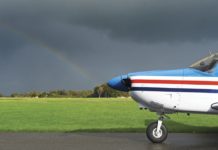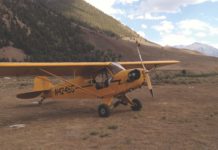To help reduce the likelihood of wing tip stall and adverse yaw, engineers developed differential ailerons. As the name implies, they deflect by different amounts: When the stick or yoke is moved to the right, for example, the aileron on the right (descending) wing is deflected up much more than the left (ascending) wing’s aileron is deflected down. This basic design is depicted in Figure 2, at right.

The reason differential aileron movement works is that deflection of an aileron upward can’t do much harm; it is the aileron deflected downward that can be the “troublemaker,” i.e., the one possibly precipitating a wing-tip stall. Additionally, a design incorporating differential aileron deflection works to minimize adverse yaw, the tendency of the ailerons to pull the airplane’s nose around to the opposite side of the intended direction of turn.
With differential ailerons, aileron drag on the descending wing is increased, which helps equalize the drag on both wings. Decreasing the downward aileron deflection and at the same time increasing the upward aileron deflection helps to minimize wing tip stall while at high AoA.

Slotted differential ailerons are a popular design. At high AoA, high-pressure air from beneath the wing flows through a slot between the aileron’s leading edge and the aft section of the wing. This improves airflow above the aileron during slow flight and improves aileron effectiveness.
Another method developed to minimize adverse yaw is the Frise aileron, depicted in Figure 2. Essentially, the aileron’s lower leading edge is designed to protrude into the slipstream when the aileron is deflected upward, lowering the wing in the direction of a turn. The additional drag complements that of the opposite aileron, which deflects downward and creates its own drag.



